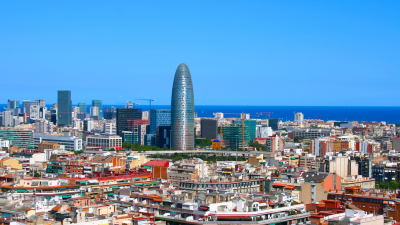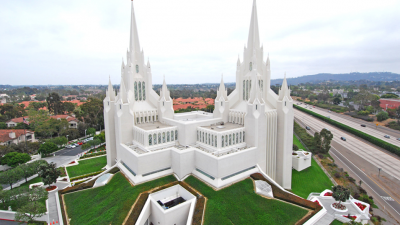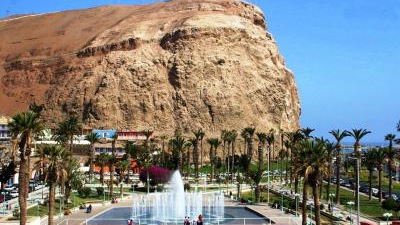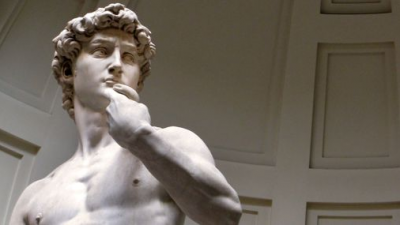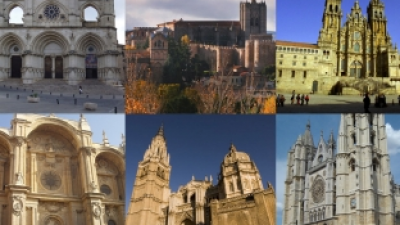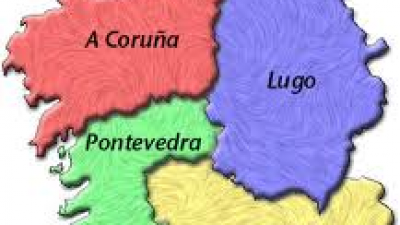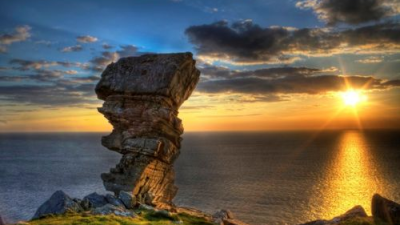Temples and sacred places for the ancient Greeks
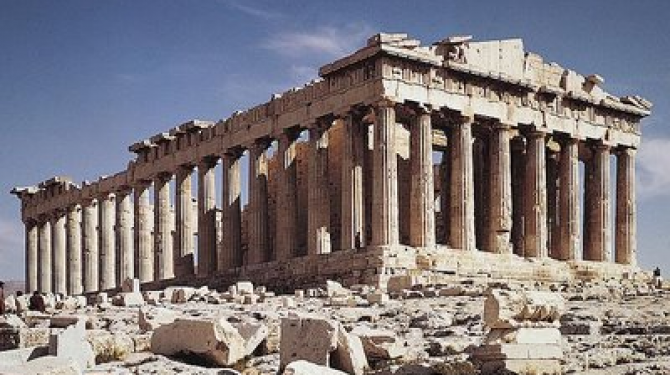
Source: listas.20minutos.es
Magnificent works of art among which are 2 wonders of the world: the temple of Artemis in Ephesus and the temple of Zeus in Olympia. There are also others such as The Parthenon or the Oracle of Delphi.
TOP 23:
THE TEMPLE OF ASCLEPEION
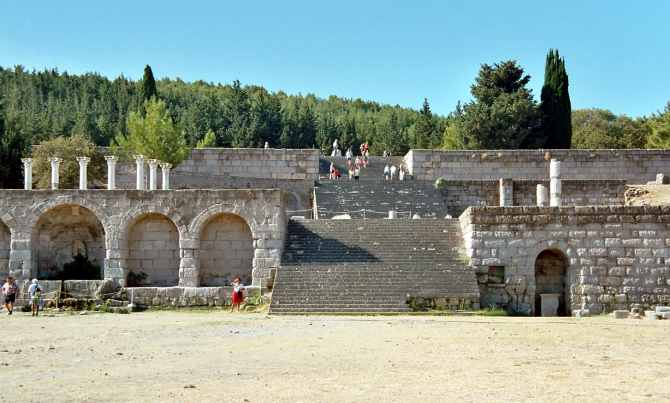
In Ancient Greece, an Asclepeion (or asklepieion) was a "healing temple," consecrated to the god Asclepius. Towards 300 a. C., the cult of Asclepius became increasingly popular. Pilgrims went to Asclepeia in large numbers to be cured. They slept all night and told their dreams to a priest the next day. He prescribed a cure, often a visit to the restrooms or a gym. Since snakes were consecrated to Asclepius, they were often used in healing rituals. Non-venomous snakes were allowed to crawl on the floor of the bedrooms where the sick and wounded slept.
TOP 22:
THE AFEA TEMPLE
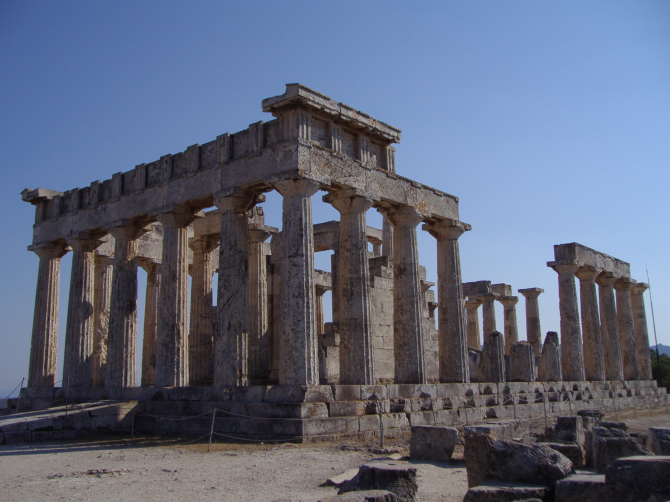
The temple of Afea (sometimes erroneously transliterated as Afaia), of Doric order, is one of the three temples of the sacred triangle of the Parthenon, Sunion and Afea. It is located on the argosarónica island of Aegina. It was for a long time considered the temple of Zeus Panhellenic, later as of Athena. It is still sometimes called «Athena Afea». Dating from the end of the 6th century BC C. or from the beginning of the 5th century BC. C. It is considered to be between the archaic period and the classical Greek art. Its famous pediments are preserved in the Glyptotek in Munich.
TOP 21:
THE CORINTH TEMPLE
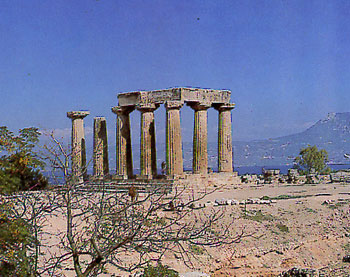
Until the last decade of the nineteenth century, the only and important monument that stood in the square, at the foot of the Acrocorinth, was actually an archaic monument: a Doric temple of large monolithic columns, currently identified with the Temple of Apollo.
TOP 20:
THE TEMPLE OF APOLO EPICURIO IN BASSAE
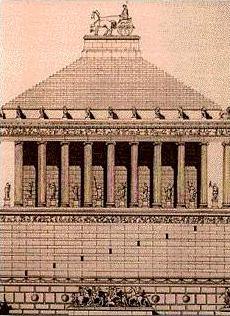
The Temple of Apollo Epicurus was erected in a place called Bassæ (ancient Greek, Βάσσαι; modern Greek Βάσσες, which means "the ravines"), on Mount Cotilo, located eight kilometers northwest of the Peloponnesian city of Figalia, in the former Arcadia region, and seven kilometers south of the modern city of Andritsaina. The beauty of this temple left us on record after visiting Pausanias. The temple of Basas has been dated from 450 BC. C. at the beginning of the fourth century BC. C. Work of the architect Ictino, framed in the reconstruction work of the previous temple, from around 500 BC. C. Pausanias himself says that the nickname of Epicurus is due to Apollo's help in the plague that devastated Figalia in times of the Peloponnesian war. The bronze image of the god, about 3.5 meters high, was taken to Megalopolis from Figalia, to adorn the temple of Apollo of that city, but in the time of Pausanias, only the columns remained of the temple.
TOP 19:
THE APOLLO TEMPLE IN DIDYMA
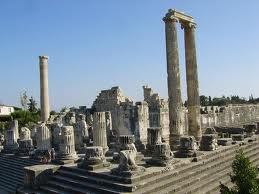
Dídima is an ancient city of Asia Minor, famous for its oracular sanctuary of Apollo, the modern Didim (in Anatolia, Turkey). The Hellenistic temple of Apollo has a size of (118 mx 60 m) cannot be compared, in Jonia with that of Hereo de Samos and with the temple of Artemis of Ephesus. It is among the great buildings of antiquity today better preserved.
TOP 18:
THE TEMPLE OF HERA IN PAESTUM
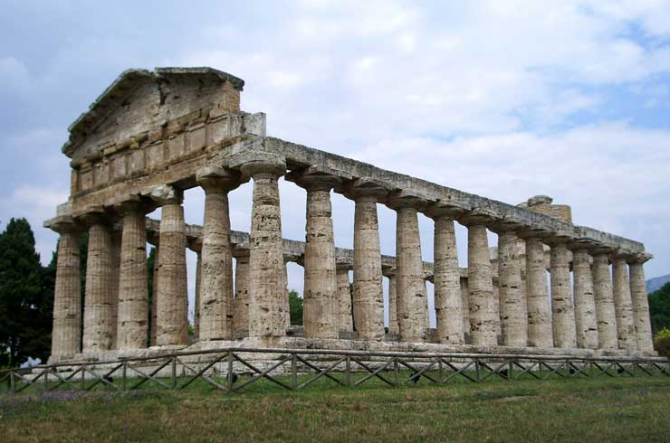
The temple of Hera or Heraion de Paestum, the ancient Greek Posidonia, built around 550 BC. C. by Greek settlers, it is the oldest surviving temple in the ancient Greco-Roman city. The archaeologists of the 18th century called it "the Basilica", because they mistakenly believed it was a Roman building. A basilica in Roman times was a civil building, not religious. The study of his inscriptions revealed that Goddess Hera was worshiped there. Later, an outdoor altar was discovered, at the front of the temple, the usual place where the ancient Greeks placed the altars so that the faithful could attend the rites and sacrifices, without entering the cella.
TOP 17:
THE OLIMPEION
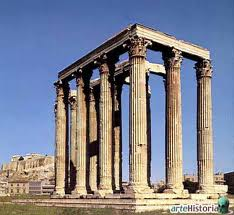
The Temple of Olympian Zeus, also known as the Olimpeion (Greek Ναός του Ολυμπίου Διός, or Naos tou Olimpiou God), is a temple in Athens. Although started in the sixth century BC. C., it was not finished until the reign of Emperor Hadrian in the second century. In Hellenistic and Roman times it was the largest temple in Greece.
TOP 16:
THE TEMPLE OF SEGEST
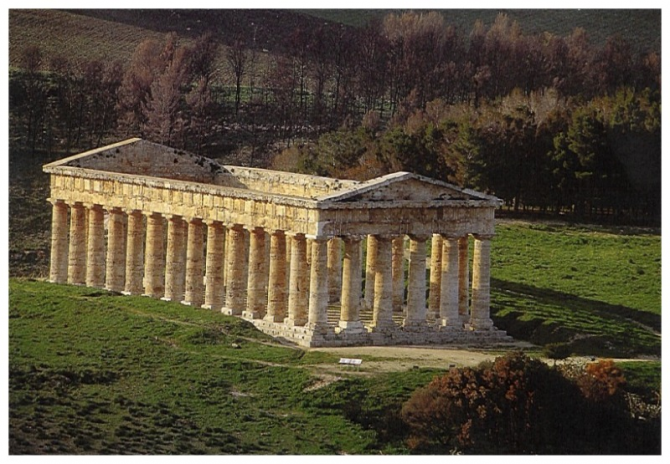
The unfinished Hexastic Doric temple of Segesta (from the end of the 5th century BC) is built on a top just outside the city of ancient Segesta with a very beautiful view over the valley. It is one of the best preserved Greek temples. Surely for several reasons at once: for its isolation on top of a hill, with no temptations to use it for local building materials, and because it has never been desecrated because it had not been completed, it would be a peripheral temple if it had never had a ship surrounding it, but it was never put on a roof, and its columns remain rough, waiting to be striated.
TOP 15:
THE IRON
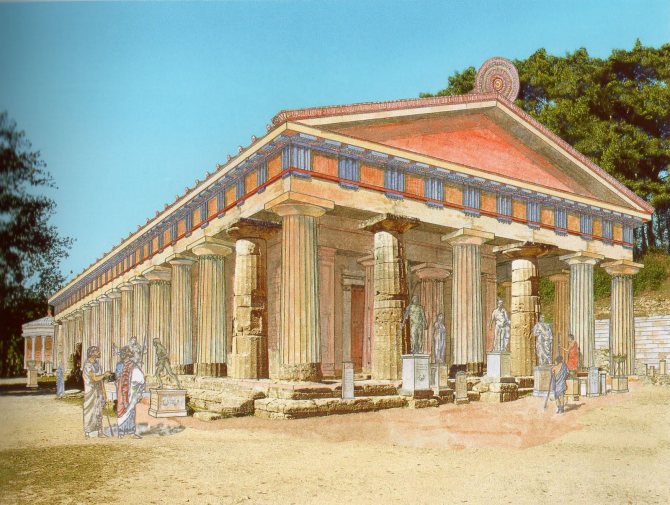
The temple of Hera in Olympia (the Hereo), was a peripheral building (surrounded by columns on the 4 sides) of six by sixteen columns. Its plant was divided into pronaos, cella and the oldest known opistodoms currently, which kept its columns "in antis" at its ends (when the side walls of the cella were enclosed by 2 columns) Its walls were still adobe (although they rested in a stone plinth one meter high) and their original columns were built by tree trunks that in the following centuries were replaced by stone ones. Although we know that still in the second century BC. C. some of the primitives remained, since Pausanias cited one of the holm oak columns in the opistodoms as a curiosity.
TOP 14:
PROPYLAEA
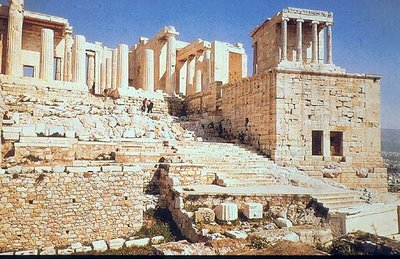
Propylaea, also known as Propylaea, Propylea or Propylaia, is the monumental entrance of the Acropolis of Athens, composed of a large covered passage, built within the framework of the monumental program of Pericles between 437 BC. C. and 431 a. C.
TOP 13:
THE TEMPLE OF ATHENS NIKÉ
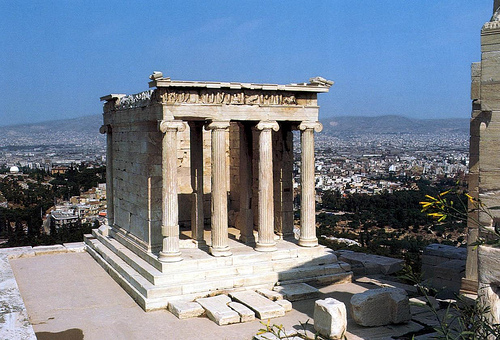
The niké temple, or Athena Victoriosa (Αθηνάς Νίκης), commemorates the victory over the Persians in the Battle of Salamis (448 BC). The idea of its construction in the Acropolis of Athens, arose in 449 a. C., after peace with the Persians. However, Pericles opposed the construction of the same and the works were not started until 421 a. C., already begun the Peloponnesian War (431-404 BC). The project was entrusted to Calícrates (Καλλικράτης), an architect who also collaborated in the construction of the Parthenon, together with Ictino, who designed a temple of Ionic order that had to adapt to the small space assigned to it: a bastion (tower) of the Propylaea, which dominates the climb to the Acropolis. Inside there was a xoanon, image of Athena personified as Niké, or winged goddess, symbol of naval victories, to which the wings were cut (aptera means without wings) so that she could never leave the city. But the temple was not destined for large meetings, for that it had an altar in front of it that allowed outdoor ceremonies.
TOP 12:
THE TEMPLE OF THE CONCORD
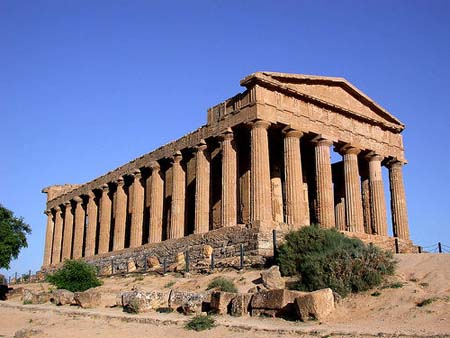
The Temple of Concord is one of the best preserved of Greek Antiquity, along with the Hephaestion (Teseión) of Athens and the temple of Poseidon in Paestum. It is one of the most perfect realizations of Doric architecture. It is peripheral with 6 × 13 columns and measures 16.92 × 39.44 m. It receives its name for a Latin inscription found near the temple, which contained the Latin word "concord." At the moment it is considered that the Dioscuros could actually be consecrated, because it was believed that in the time of the Greeks two divinities had been honored there. It was built in the years 440-430 a. C. The inequalities of the land on which it is built are overcome by an important basement (krépis). Its plan corresponds to the most classical form of the temples of Agrigento: pronaos, naos, opistodomos and peristilo. The Temple of Concord is, of all those in Agrigento, the most accurately constructed. The problem of extremes, inherent to Doric temples (conflict between the regularity of the metopes and triglyphs on the one hand, and the regular spacing of the columns on the other) was solved in an unusual way: at the same time the narrowing of the space between the last two columns and the prolongation of the last metope, for a better visual effect.
TOP 11:
THE TEMPLE OF Aphrodite
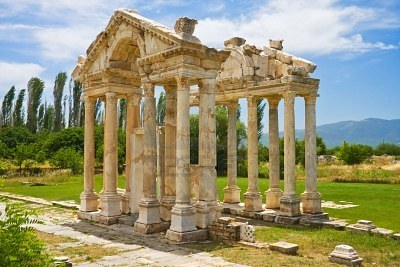
The Temple of Aphrodite Urania was discovered in 1981 in the northwestern part of the Agora of Athens, on the other side of the Via de las Panateneas. The excavations have allowed to date the building towards the year 500 a. C. An altar has been identified by the shape of the monument, by the ashes and bones found resulting from sacrifices. It is assumed that the altar was dedicated to Aphrodite, since Pausanias mentions an altar dedicated to Aphrodite Urania in that enclave, two fragments of marble reliefs supporting this thesis.
TOP 10:
THE HEFESTION
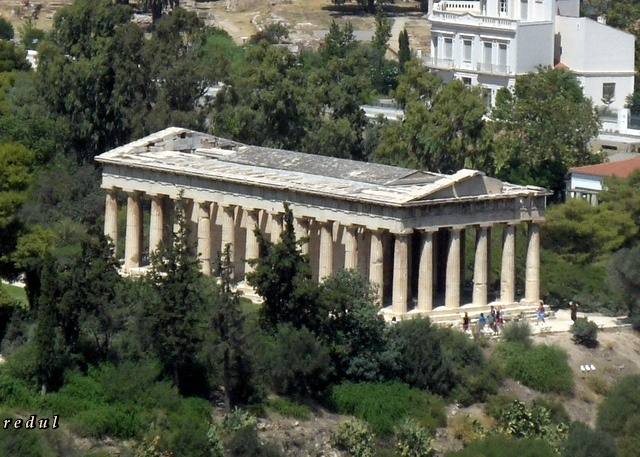
The Hephaestion (in Greek Ηφαιστείον) or temple of Hephaestus and Athena Ergané or Teseion (in Greek Θησείον) is a Peripheral Doric temple, located in the northwest of the Agora of Athens, at the top of the hill called Agoreo settlers. From the seventh century until 1834, it was a Christian church. No remains of an earlier building have been found and it is not, therefore, a reconstruction of one after the Persian destruction in Athens during the Medical Wars. The temple testifies to a particular wealth of sculptured ornaments. Keep the gable roof with a pediment that no longer contains any ornament. It is hexástilo and its Doric order columns.
TOP 9:
THE THEION OF DIONISO
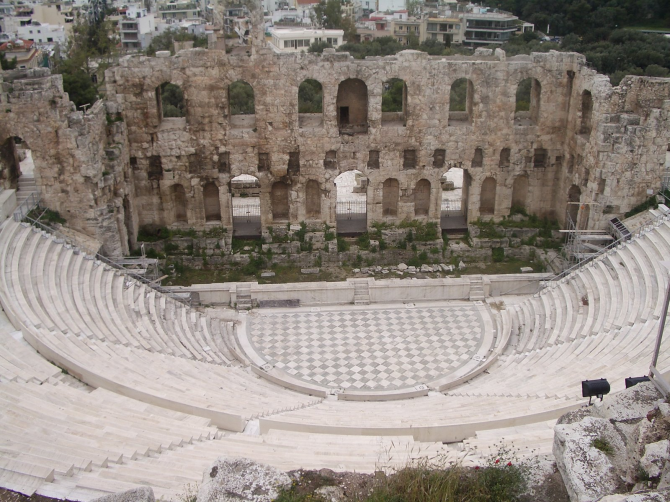
The Dionysus Theater was the largest theater in ancient Greece, located at the foot of the northern part of the Acropolis of Athens and forming part of Dionysus's fearsome. Dedicated as its name indicates to the god of the vineyards and the theater, Dionysus, prayers around the altar of the temples were initially represented in honor of the god and the spectators sat on their sides, until they evolved into the classical tragedies of Aeschylus, Sophocles, Euripides and Aristophanes. Around the year 407 a. C. the custom was that after the performance a satire was made, the time of the performances was extended to about six hours and the entrance was expensive. It was built during the 6th century BC. C., with a capacity for 15,000-17,000 spectators. The actors were placed on a platform, there was an interior part where they rehearsed, and the spectators were placed on the slope of the hill, where they used to party. At the end of the 5th century BC C. the primitive wooden platforms were replaced by cement bleachers. It had 46 steps divided into two levels by a circular corridor. In the central and last part of the first stands there were 67 seats that were subsequently made in decorated marble and were reserved for high positions.
TOP 8:
THE POSEIDON TEMPLE
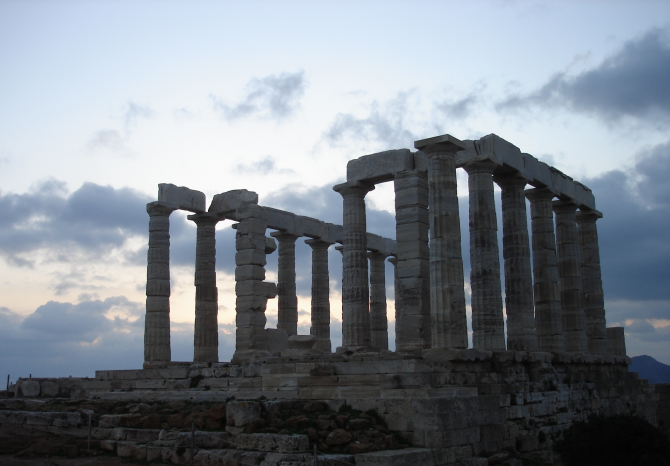
The ruins of the temple of Poseidon, built in the 5th century BC. C. on the ruins of a temple built in the archaic period, they are perched on the sea at a height of almost 60 meters. The columns of the temple are 6.10 m high, with a diameter of 1 meter at the base and 79 centimeters high. Their stretch marks, less than usual, (16 instead of 20), were to resist the erosive action of sea air. The stone was extracted from nearby Agrileza. The English poet Lord Byron engraved his name in one of the columns.
TOP 7:
THE EPIDAUR THEATER
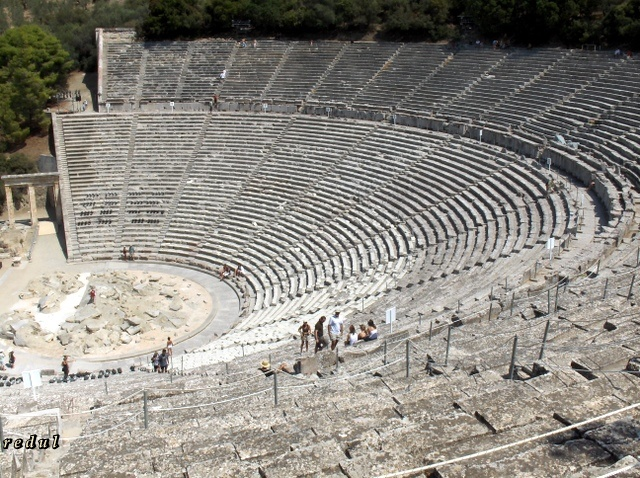
The theater of Epidaurus is an ancient theater of Argolis, built in the fourth century BC. C. to host the Asclepeia, contest in honor of the medical god Asclepius. It is the model of numerous Greek theaters.
TOP 6:
THE TEMPLE OF ARTEMISA IN CORFÚ
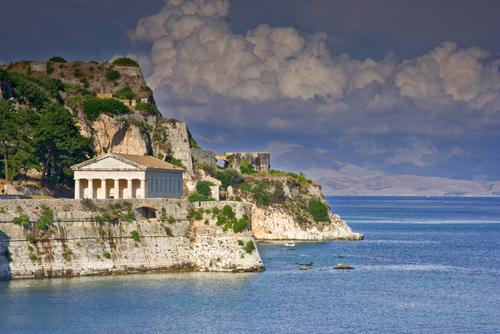
Most likely, the temple dedicated to Artemis cited by Cicero has not yet been identified, or perhaps it would coincide with the great Ionian temple, of which only the foundations are preserved, excavated under the Vermexio palace, next to the north side of the cathedral. No doubt the cult of Artemis was very important in Syracuse. We know that Pindar called Ortigia "the abode of the river Artemis" (Píticas, II, 11). In addition, Tito Livio (XXV, 33) recalls that Artemis's party was the main celebration of the city; It lasted three days.
TOP 5:
THE ERECTEION
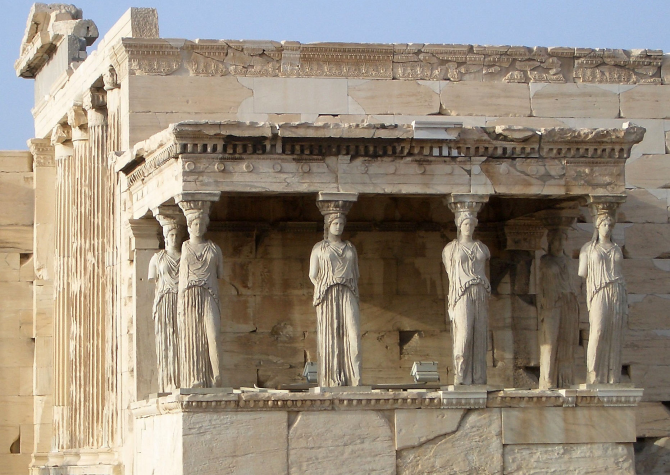
Located in the Acropolis of Athens, the Erechtheion is a Greek temple erected on the north side of the Acropolis of Athens in honor of Athena Polias, Poseidon and Erechtheum, mythical king of the city. Ionic order, aeropher, attributed to the architect Filocles is one of the most beautiful Greek architectural monuments. It is made of Pentelic marble. Its construction began in 421 a. C. and it was concluded in 406 a. C. His name, which means "he who shakes the Earth," designates the attic nickname of Poseidon. It replaces the archaic temple of Athena Polias that was between the Parthenon and the current site and was destroyed by the Persians in 480 BC. C. during the Medical Wars.
TOP 4:
THE DELFOS ORACLE
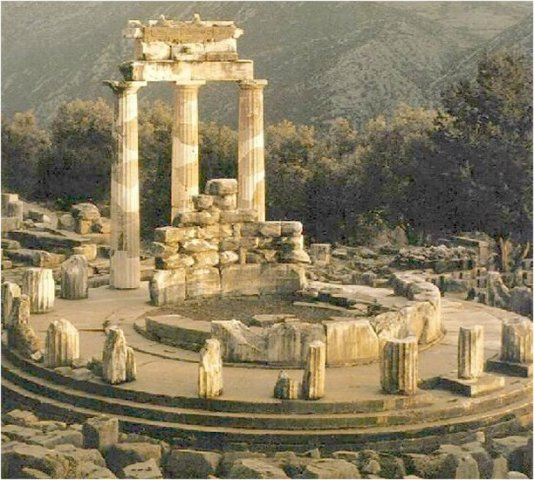
The oracle of Delphi was a great sacred precinct dedicated mainly to the god Apollo who had in the center his great temple, to which the Greeks went to ask the gods about disturbing questions. Located in Greece, on the site of what was the ancient city called Delphi (which no longer exists today), at the foot of Mount Parnassus, in the middle of the Phocis mountains, 700 m above sea level and 9, 5 km away from the Gulf of Corinth. From the mountain rocks sprouted several springs that formed different sources. One of the most well-known fountains since ancient times was the Castalia fountain, surrounded by a grove of laurels dedicated to Apollo. Legend and mythology tell us that on Mount Parnassus and near this fountain there were some divinities, minor goddesses of singing, poetry, called muses along with the nymphs of the fountains, called Naiads. In these meetings Apollo played the lyre and the divinities sang.
TOP 3:
THE TEMPLE OF ARTEMISA IN EPHESUS
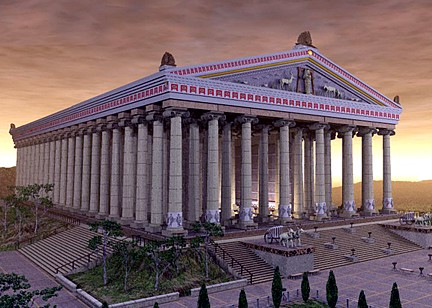
The Temple of Artemis was a temple located in the city of Ephesus, Turkey, dedicated to the goddess Artemis, named Diana by the Romans. Its construction was started by King Creso de Lidia and lasted about 120 years. Large in size and beautiful architecture, it is considered one of the Seven Wonders of the Ancient World, as described by Antipater of Sidon, who drew up the famous list: I have laid my eyes on the wall of the sweet Babylon, which is a carriageway , and the statue of Zeus of the alfeos, and the hanging gardens, and the Colossus of the Sun, and the enormous work of the high Pyramids, and the vast tomb of Mausolo; but when I saw Artemis's house, perched there in the clouds, those other marbles lost their brightness, and I said: apart from from Olympus, the Sun never seemed so great Antipater of Sidon Greek Anthology (IX.58)
TOP 2:
THE TEMPLE OF ZEUS IN OLIMPIA
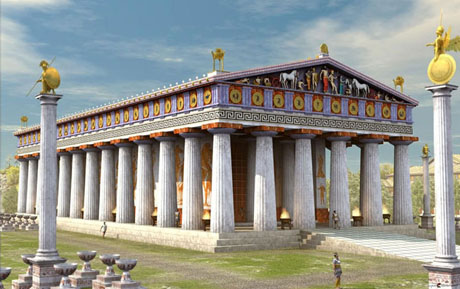
The Temple of Olympian Zeus in Olympia, built between 470 and 456 a. C., was the model of the classical Greek temples of the Doric order.The temple was built on the most famous sanctuary in all of Greece, which had been dedicated to local Panhellenic deities and was probably established towards the end of the Mycenaean period. The Altis, annex with its sacred grove, the open-air altars and the tumulus of Pélope, date from the 10th and 9th centuries BC. C., when the cult of Zeus joined the already established cult of Hera. The temple housed the statue of Zeus that was one of the seven wonders of the ancient world. The criselefantina statue was approximately 13 meters high and had been sculpted by Phidias in his workshop in Olympia. The building was built by the architect Libón, with friezes carved with metopes and triglyphs and pediments full of sculptures in the severe style, which are now attributed to the Master of Olympia and his school. The main structure of the building was of local limestone, which was not colorful and of very poor quality, so it was covered by a thin layer of stucco to give it the appearance of marble. All the sculptural decoration of the temple was made of Paros marble, and the roof tiles were of the same Pentélico marble that was used to build the Parthenon in Athens. Heracles demolishes the old order: metope of Heracles and the bull of Crete (Louvre Museum). The theme that unifies the iconography of the temple is the diké, justice based on customs represented by Zeus, his defender.
TOP 1:
THE PARTHENON
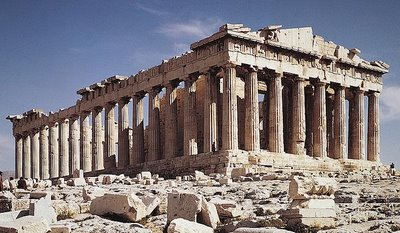
The Parthenon (in ancient Greek Παρθενών / Parthenṓn (from παρθένος, female name, "young woman, virgin") literally "the residence of the young women", 1 that is, here "the residence of Athena Parthenos"). The Parthenon is one of the main Doric temples that are preserved, built between 447 and 432 a. C., its approximate dimensions are: 69.5 meters long, by 30.9 meters wide; The columns are 10.4 meters high. It is dedicated to the Greek goddess Athena, whom the Athenians considered her protector. It is part of the Acropolis of Athens.
More lists


